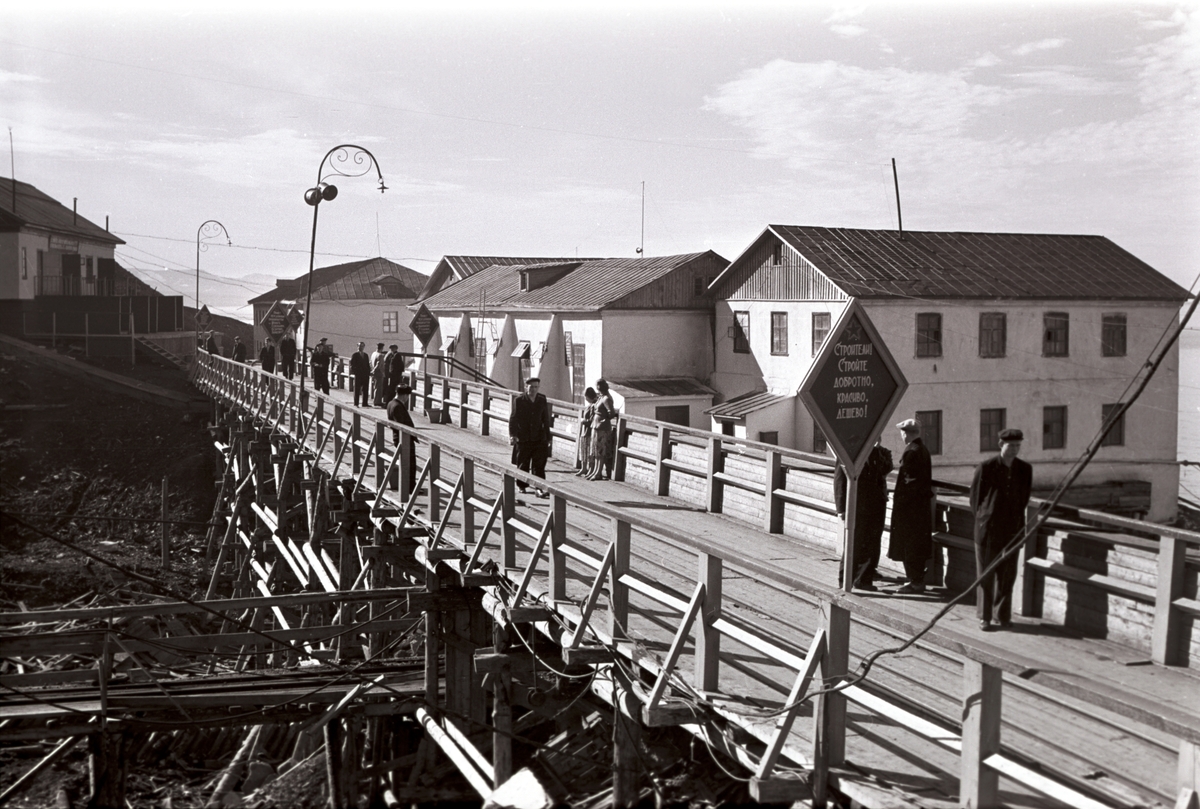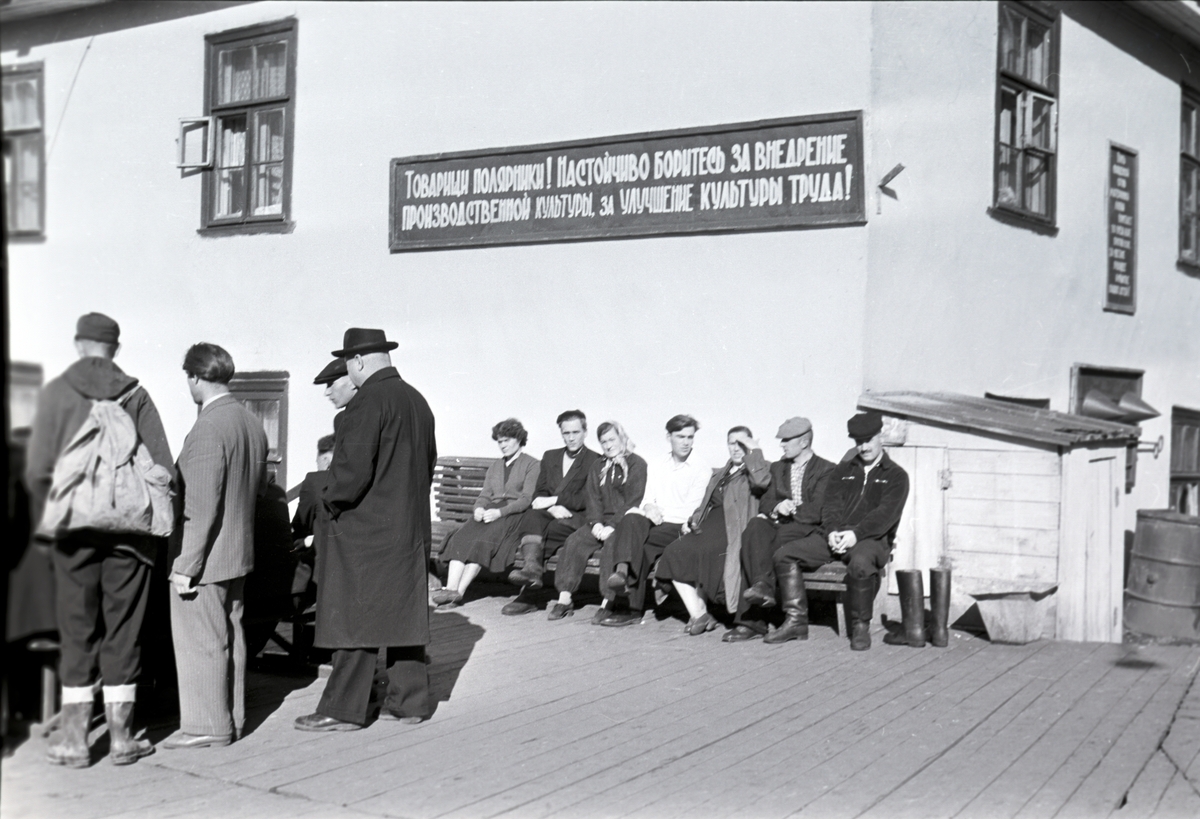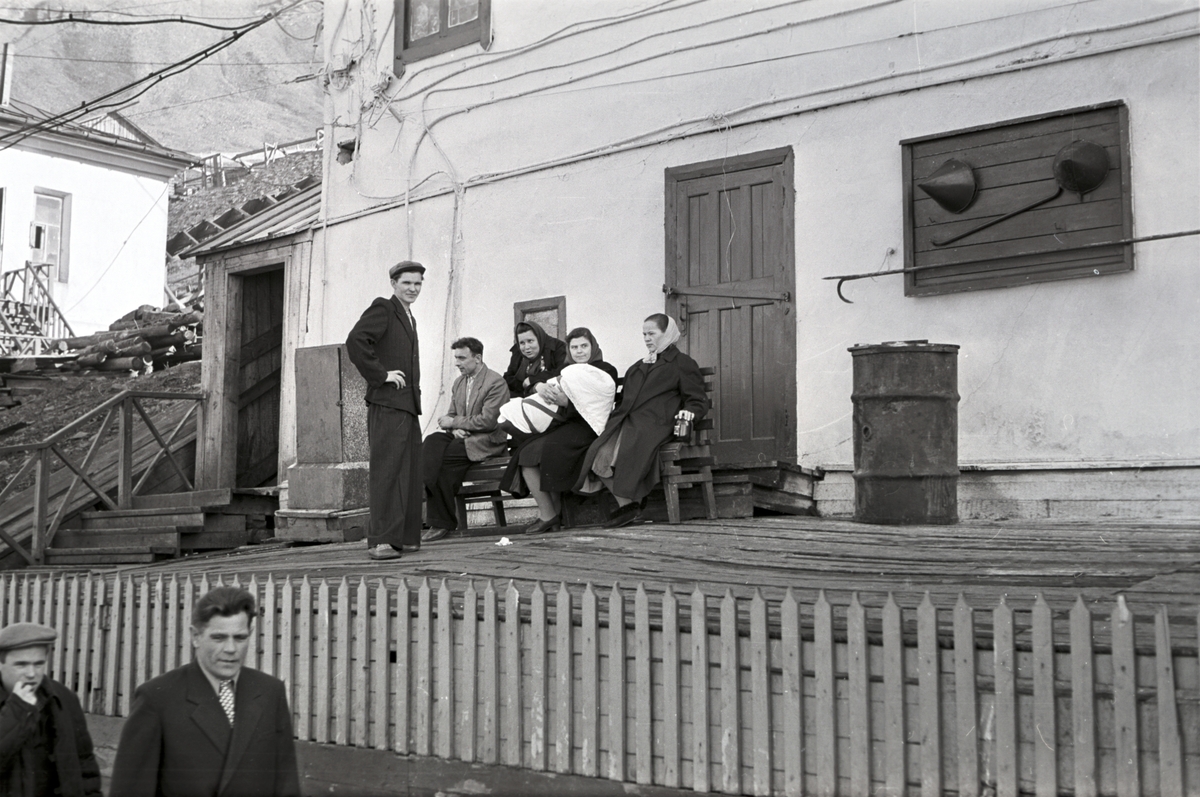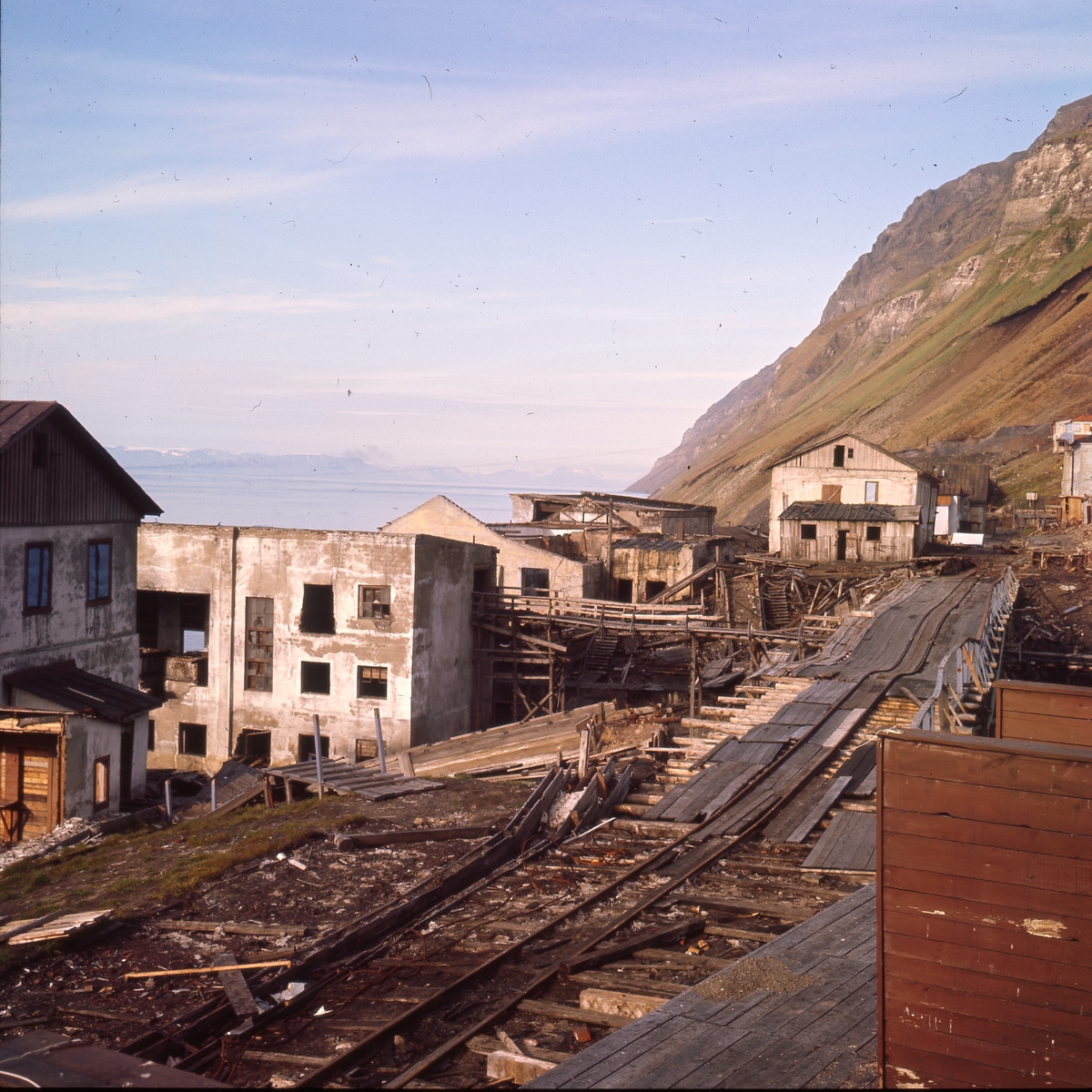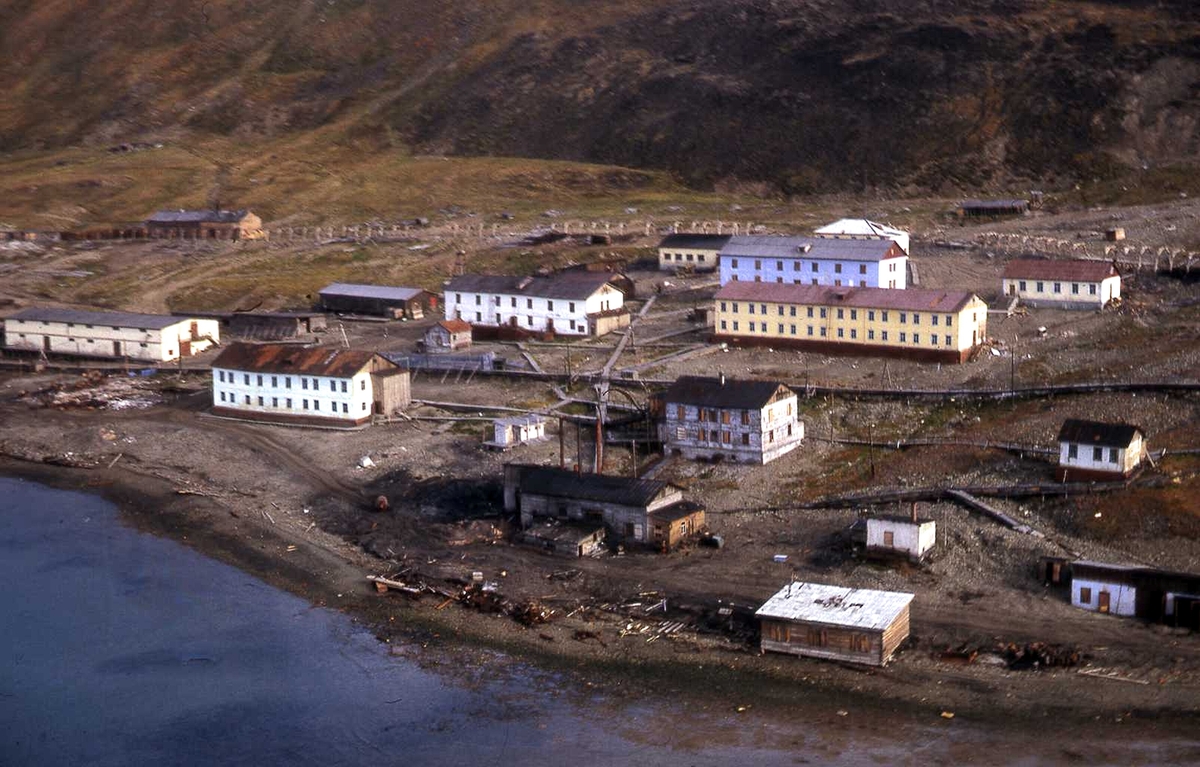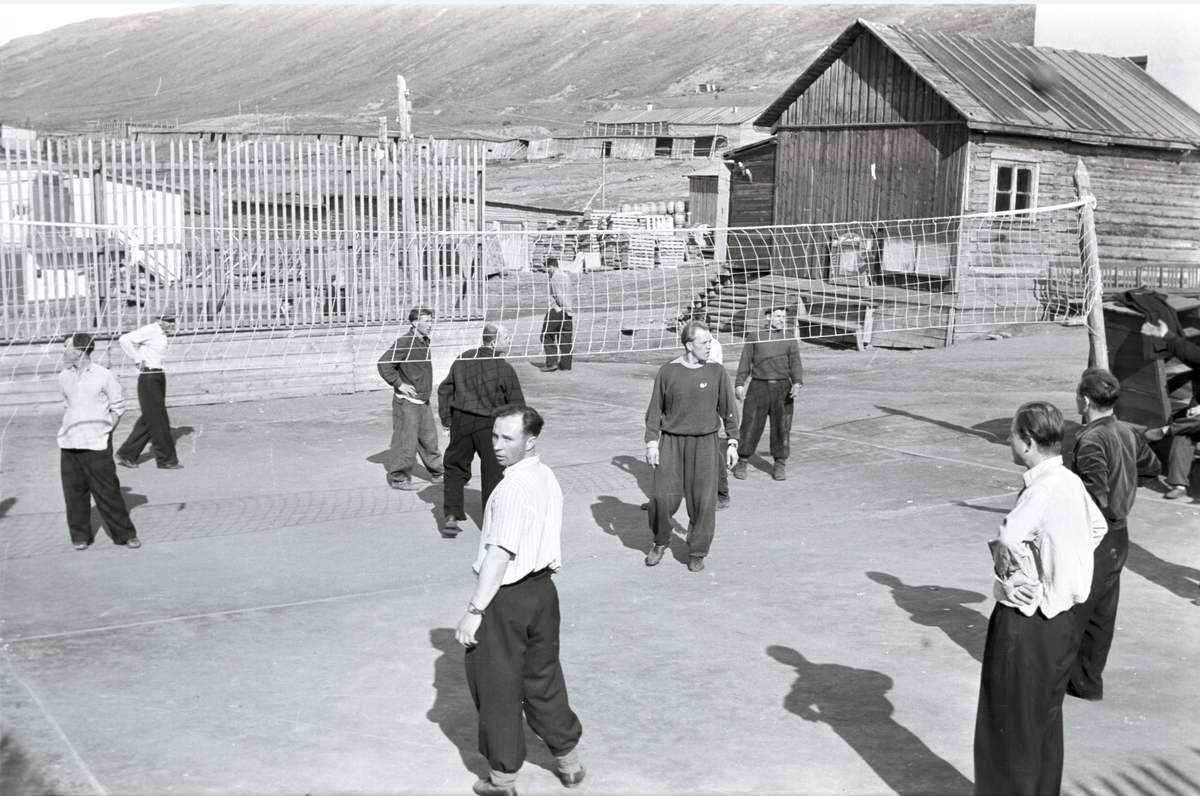The town and the company that built it were named after the old Russian name for Svalbard. Linguists believe the name derives from "Greenland" and that over the years it evolved into "Grumant." For a time, people in Western Europe believed Svalbard was simply a part of Greenland. Whether the Pomors believed the same, or confused Svalbard with Greenland, is unknown — but "Grumant" was the name they used for the archipelago.
Mining operations were resumed by Trust Arktikugol in 1931, and by 1940, 405 adults and 21 children lived there. After Germany's invasion of the Soviet Union, the settlement was evacuated, and in 1943 it was leveled during Operation Zitronella. Only a couple of small houses remained. Reconstruction began in 1946 and was completed in the summer of 1949. By 1951, the population had reached 1,106 people, including 32 children. The town was also home to one of the first female miners on Svalbard. Between 1954 and 1956, Nina Anisimovna Faustova worked as a "runner" in mine transport. In comparison, it took 30 more years before women were allowed to work in Norwegian mines.
1961 - The town is abandoned
By 1961, most of the coal had been extracted. Additionally, the mines were plagued by faults — a geological phenomenon where coal seams suddenly drop or rise within the rock, making operations difficult. Workers had to dig through many meters of rock to reach the coal again. It was therefore decided to discontinue operations. A small maintenance crew remained until the final closure decision was made, and in 1967, the site was completely abandoned. Grumantbyen became a ghost town, and decay quickly set in.
Coles Bay
The harbor conditions in Grumant were poor, so a settlement was established in Coles Bay, or Colesbukta. From Grumantbyen, coal was transported about 8 kilometers to Coles Bay by an electrified railway for shipping. After Grumantbyen was shut down, Coles Bay was also abandoned. Some oil and gas exploration occurred there in the 1970s, but the buildings were not reused until 1981. From then until 1988, Coles Bay housed Trust Arktikugol’s geological team, which had previously been based at Mount Olav near Barentsburg. At its peak, the site housed over 60 people, and plans were made to initiate coal mining there. However, the plans never materialized, and the settlement was once again abandoned in 1988.
Today, parts of the structures in both Grumantbyen and Coles Bay remain as reminders of the first Russian town on Svalbard. Many buildings have already collapsed, but a few still stand. Coles Bay in particular, being the more accessible of the two, is a popular destination for locals from Longyearbyen and a stopover point for organized snowmobile tours heading to Grønnfjorden.
